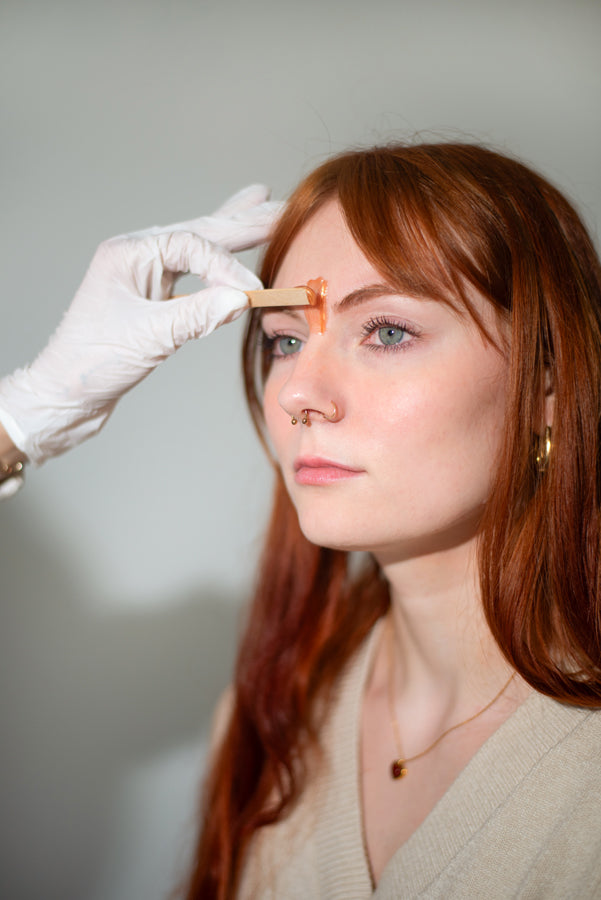
If you’re new to waxing, you may wonder if waxing is bad for your skin. After all, the initial sting of that first wax strip might raise questions about what this process is doing to your skin. While waxing offers a number of advantages, some people experience more pain and inflammation than others.
How does waxing benefit the skin?
Over time, waxing can improve the texture and appearance of your skin, and may even minimize future hair growth. Here’s how:
Exfoliation
Soft wax, which is often used for larger treatment areas like the legs and arms, can effectively eliminate dead skin cells as it removes unwanted hair. In turn, this method may reveal a new layer of skin and encourage faster cell turnover rates, leading to a youthful complexion. With regular sessions, waxing can reduce the risk of ingrown hairs and clogged pores for skin that’s smooth, radiant, and oh-so-touchable.
Reduced hair growth
Waxing is generally not bad for your skin, but it can damage individual follicles, causing them to stop producing new strands of hair. However, this is a good thing in the long run. As you keep a consistent waxing schedule, you may find that waxing can reduce hair growth over the course of several waxing sessions.
Finer hair regrowth
Removing hair at the root means that each shaft must regenerate from the bulb within the follicle. As such, these strands are thinner, finer, and less noticeable than the thick, coarse stubble you get with shaving.
Less irritation
When compared to other hair removal methods like shaving, waxing poses less of a risk of irritation, infection, and skin damage. If you shave with a razor that lives in your shower, you could be introducing harmful bacteria into your skin each time you use it.
Read more: What Are the Benefits of Routine Face Waxing?

What are the drawbacks of waxing?
Is waxing actually bad for your skin? In most cases, the answer is no, but some people with sensitive skin or those prone to allergic reactions may experience more disruptive side effects.
Redness or irritation
Inflamed skin isn’t uncommon after waxing, and it usually resolves within a few hours of treatment. But some people may suffer from hot, itchy skin that requires extra care for days.
Soothing aloe vera gel and a fragrance-free moisturizer can help calm this inflammation.
Bumps and ingrown hairs
While wax is a great natural exfoliant, it’s important to continue exfoliating regularly between appointments to remove dead skin cells and create a clear path for new hairs to exit the skin. Doing so can help you avoid bumps and prevent ingrown hairs.
Infection
In some cases, waxing may cause folliculitis. These small, red bumps may appear when bacteria enter hair follicles after waxing or shaving. It’s especially common in areas with thick, coarse hairs like the bikini line. A gentle exfoliant, such as a mild AHA or BHA, can usually eliminate bumps within a couple of days.
Dark spots
People with darker skin may be more susceptible to post-inflammatory hyperpigmentation when a waxing provider is too aggressive with the skin or the treatment area receives excess sun exposure.
Related: Waxing Facts and Myths
How to choose wax for sensitive skin
Each person has a different pain tolerance and may respond differently to waxing, but that doesn’t mean it’s bad for your skin. Here are a few considerations when choosing the right wax for sensitive skin:
Look closely at the ingredients
The properties in each wax product can differ drastically, so it’s wise to inspect the ingredients list carefully before using any solution on sensitive skin. For optimal results, choose a hypoallergenic, fragrance-free wax with no harsh chemicals or irritating ingredients.
Patch test
To avoid allergic reactions and contact dermatitis, it’s important to perform a patch test when introducing a new product. Use a small amount of wax in an inconspicuous area, then wait 24 hours before treatment to ensure your skin tolerates the product. If you experience a severe reaction, reach out to your healthcare provider.
Consider hard vs soft wax
Consider hard vs soft wax, since hard wax doesn’t adhere to skin and tends to be more gentle than soft. It’s the go-to solution for facial waxing and sensitive areas like the bikini line, but you can technically use hard wax anywhere you’d use soft wax. If it doesn’t grab all the hairs in one application, it’s generally safe to reapply this solution in the same area.
Related: What’s the Best Hard Wax for Sensitive Skin?
Experience the best in professional waxes and supplies at Enso Wax!
At Enso Wax, we only offer a curated selection of high-quality wax products that are good for skin! Our Penny Soft Wax and Penny Hard Wax are both antimicrobial, hypoallergenic, and completely vegan.
We formulated these solutions with sensitive skin in mind, so you can trust a safe and effective waxing treatment every time. We even offer hard wax samples you can test out before investing. Reach out today to learn more!


